
Elizabeth "Betsey" Paton or later Elizabeth Andrew of Lairgieside was the daughter of James Paton and Eleanor Helen Paton of Aird Farm, Crossroads, Ayrshire. Following an affair with Robert Burns she gave birth on 22 May 1785 to his first child, Elizabeth "Bess" Burns, the "Dear-bought Bess", who was baptised when only two days old. Betsey met Robert Burns when she was employed as a servant girl at the Burns's Lochlea Farm during the winter of 1783–84. When the Burns family moved to Mossgiel Farm in March 1784, Betsey returned to her own home, where Robert Burns visited her later that year. In 1786, Elizabeth made a claim on Burns, but accepted a settlement of twenty pounds which the poet paid out of the profits of the Kilmarnock Edition. Loving Burns with heartfelt devotion, she continued to see him after the Burns family had moved to Mossgiel Farm, and he returned these sentiments with more physical than spiritual devotions. Isabella Begg, Burns's youngest sister, stated that although Robert did not love her, "he never treated her unkindly."

Lesley Baillie (1768–1843), later Mrs Lesley Cumming, was born at Mayville, Stevenston, Ayrshire. She was a daughter of Robert Baillie and married Robert Cumming of Logie, Moray. Her lasting fame derives from being Robert Burns's 'Bonnie Lesley', "the most beautiful, elegant woman in the world". On her tombstone her name is given as Leslie Baillie.

Helen Anne Park, known as Anna Park or Ann Park, was born in 1769 at Moffat, Scotland. She was thought to have been the daughter of Joseph Park, an Edinburgh coachmaker, and Jean Dick. However, recent research has shown that she was actually the daughter of Walter Park and Elizabeth Blacklock. Margaret Ewing née Park, a onetime landlady of 'The Globe', was her sister and she worked there as a barmaid. Anna bore the poet Robert Burns an illegitimate child named Elizabeth 'Betty' Burns as a result of an adulterous affair.
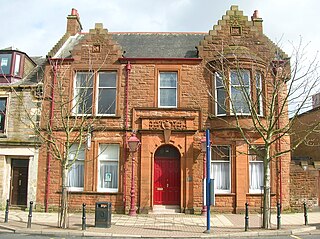
The Irvine Burns Club, based at the Wellwood Burns Centre & Museum, was founded on 2 June 1826 and is one of the world's longest continuously active Burns Clubs. At least five personal friends of Robert Burns were among the group of local gentleman, whose idea it was to form the club. Irvine in North Ayrshire is an old market town and port situated on the west coast of Scotland, approx 14 miles north of Ayr.
Isabella Steven or Tibbie Stein was the daughter of a tenant farmer from Littlehill or Little Hill Farm (NS467305) that adjoined the Burns's farm at Lochlea. 'Stein' is an alternative form of the surname 'Steven'. Littlehill had three acres of land that are said to have been little better than peat moss. She is also said to have lived in Tarbolton.
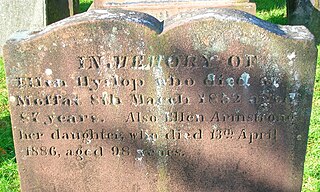
Helen Hyslop, also Nelly or Ellen Hyslop was a 'noted local beauty' in Moffat and a strong local tradition maintains that Robert Burns was for some time a great admirer of her and that she had an affair with him. A daughter, also Helen, is said to have been born as a result of this liaison. Parish records show that a Helen Hyslop, the mother of Burns's possible daughter, was born in the area in 1766, her parents being John Hyslop and Janet Howatson of Langholm.
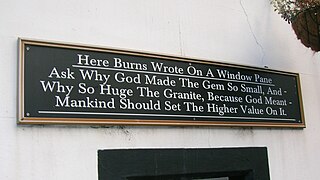
Robert Burns came to know James Cunninghamme, Earl of Glencairn in Edinburgh in 1786 through a 'Letter of Introduction' provided by Dalrymple of Orangefield who was married to Lady Glencairn's sister. The Earl received the poet warmly in his house and introduced him to his friends. One of several gifts from the earl to the poet was a diamond point pen, stylus, or cutter which he used to write upon many windowpanes and glasses, scribing verse, his signature, epigrams, or other writings for posterity. Many of these diamond-point engravings survive, some however are contentious as regards either their authenticity, meaning, or both.

Robert Burnes or Robert Burness was a paternal uncle of the poet Robert Burns. He left the family farm of Clochnahill or Clokenhill in Kincardineshire with his younger brother William Burnes, and found work at the Lochridge or Lochrig limestone quarries and lime kilns that lay near Byrehill Farm near Stewarton. He was a teacher, a gardener later in life and a land steward on the nearby Robertland Estate, possibly through the influence of his nephew. Robert Burns referred to his him as Poor Uncle Robert upon his death in 1789.

Brownhill Inn, now just called Brownhill, was an inn approximately 1 mile (1.6 km) mile south of Closeburn, on the A76, which itself is about 2 miles (3.2 km) south of Thornhill, in Dumfries and Galloway, Scotland. Built in approximately 1790, this old coaching inn has undergone extensive changes, and the south side of the original property appears little changed whilst part of the inn has been demolished. The inns facilities used to include the once-extensive 12 stall livery stables on the west side of the road, but these have been sold and converted to farm buildings after the inn closed. The inn was the first changing place for horses hauling coaches from Dumfries and closed in 1850. In 1789 an Act of Parliament had been passed that enabled the building of a Turnpike from Auldgirth Bridge to Sanquhar through Closeburn Parish and the inn was built to serve the patrons of this new road. The toll road supplanted the original post road that ran via Stepends, Gateside and Shaw that may have been of Roman origins.
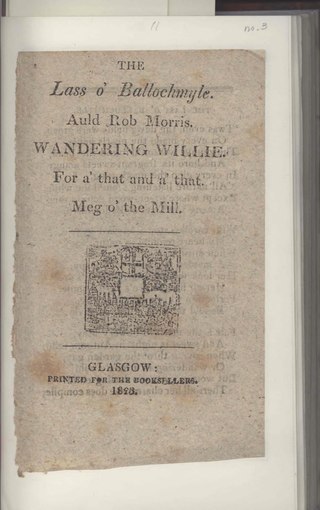
Wilhelmina Alexander (1756–1843), was born at Newton House, Elderslie, Renfrewshire. She was the 4th daughter of Claud Alexander of Newton and Joanna, daughter of Alexander Cuninghame of Craigends. Her lasting fame derives from being Robert Burns's 'The Bonnie Lass o'Ballochmyle' in the song of that title. Robert Burns was accustomed to taking walks and musing over his poetry and songs in the Ballochmyle Estate next to the River Ayr when he caught sight of her one-day and composed the song in memory of the event. She refused publication at the time and Burns never forgave this perceived slight on his genius, Wilhelmina never married, she did however treasure the letter and the manuscript of the song until her dying day.
Adam Armour (1771–1823) was the younger brother of Jean Armour and therefore the brother-in-law of the poet Robert Burns. In addition, being married to Fanny (Frances) Burnes, he was also related to the poet through his father-in-law 'Poor Uncle Robert', who lived at Stewarton.
James Armour was a master mason and father of Jean Armour, and therefore the father-in-law of the poet Robert Burns. His birth year was shown here as 1730. The Scotland's People database has no record of this year of birth for a James Armour. Wikitree and several other data sources have his birth date as 10th/24th January 1731. The Scotland's People database has this record but showing his baptism on 24 January 1731. His birth on the original Old Parish Record is shown as 15 January 1731 to John Armour and Margrat(sic) Picken in Kilmarnock. James named his first son John which would normally be after James's father i.e. John. The chances of there being two James's born on exactly the same date exactly one year apart appear very remote and the naming of the first child seems to validate the conclusion that James Armour was born in 1731 and not 1730.

Agnes Burns or Agnes Galt was the eldest sister of Scottish poet and lyricist Robert Burns. She was born in 1762 at the Alloway Cottage in South Ayrshire to William Burnes and Agnes Broun. She did not adopt the spelling 'Burnes'. At the advanced age of forty-two, late for the times in which she lived, she married William Galt at Dinning in 1804 who had worked for her brother Gilbert at Dinning Farm in Nithsdale.

John Richmond (1765–1846) was one of Robert Burns's closest friends and confidants. He was born in Sorn parish at Montgarswood, Ayrshire, Scotland. His father, Henry Richmond, was a merchant in Mauchline and owned Montgarswood Farm that lies near Sorn. This farm passed to James, John's brother, having once been farmed by William Fisher, Burns's Holy Willie.

James Smith of Mauchline was one of Robert Burns's closest friends and confidants. He was born in 1765, son of a Mauchline merchant, Ayrshire, Scotland. In 1775, when he was only ten years, old his father, Robert Smith, a prosperous local merchant, was killed in a riding accident, falling from his horse whilst returning from Ayr. His mother, Jean Smith, remarried James Lamie who owned the adjoining house.
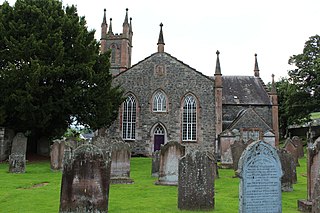
William Nicol (1744–1797) was a Scottish schoolmaster, and, if ill-tempered and vain, one of Robert Burns's close friends. He was born in Annan parish at Dumbretton, Dumfries and Galloway, Scotland. Burns referred to him in one letter as "Kind hearted Willie" and he accompanied the poet on his August 1787 tour of the Highlands. Burns's third son, William Nicol, born at Ellisland Farm in 1791, was named after his friend, the poet commenting that his newborn son had "that propensity to witty wickedness and manfu' mischief, which even at twa days auld I foresaw would form the striking features of his disposition."

John Bacon was a vintner, the landlord at the one time important hostelry named the Brownhill Inn, that lay in open country to the south of Closeburn in Nithsdale on the Ayr to Dumfries Road. From 1788 to 1791 the poet Robert Burns spent many an evening at Bacon's inn whilst travelling on his Excise duties. A coaching stop and hostelry, the inn lay about 7 miles north of Ellisland Farm, Burns's home before the family moved into Dumfries. During their tour of August–September 1803 Dorothy Wordsworth, with her brother William Wordsworth and mutual friend Samuel Taylor Coleridge were hosted by Bacon and his wife at their inn.

Edward Whigham (1750–1823) was the landlord of a coaching inn, a bailie, Provost of Sanquhar, bibliophile and one of Robert Burns's close friends during his Nithsdale and Dumfries days. Edward married Jane Osborne who died on 6 October 1846.

James Glencairn Burns (1794–1865) was the fourth son and eighth child born to the poet Robert Burns and his wife Jean Armour. James was born at their home in Mill Brae Street, now Burns Street in Dumfries on 12 August 1794. His first and middle name was added in honour of James Cunningham, 14th Earl of Glencairn, Robert's friend, patron and mentor.
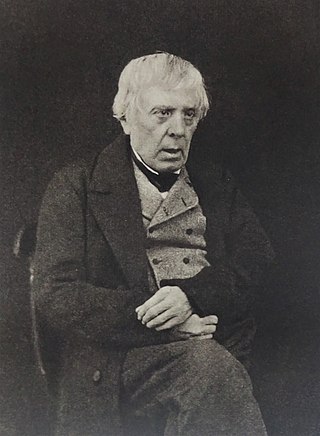
Robert Burns Junior or Robert Burns ll (1786–1857) was the first son and one of the first pair of twins born to the poet Robert Burns and his wife Jean Armour. He was born on the 3 September 1786 and baptised on 5 September. John Tennant of Glenconner was a witness at the baptism. His twin sister was Jean Burns, who died of unknown causes in infancy on 20 October 1787. His father, who often called him 'Bobbie', died when Robert Junior was only 9 years old, at which point he was the eldest of a family of five legitimate male offspring.

















